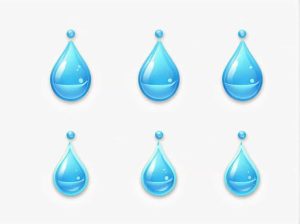Photosynthesis is a fundamental biological process that allows plants algae and some bacteria to convert light energy into chemical energy. This process is essential for life on Earth as it produces oxygen and serves as the primary source of energy for most ecosystems.
The photosynthetic reaction occurs within specialized cell structures called chloroplasts where light energy is captured and transformed into glucose. This topic will explore the photosynthesis equation the stages of photosynthesis and where this process takes place in plant cells.
1. The Photosynthetic Reaction: Chemical Equation
The general equation for photosynthesis is:
Explanation of the Equation:
- Carbon dioxide (CO₂): Absorbed from the air through small openings called stomata.
- Water (H₂O): Absorbed by plant roots from the soil.
- Light energy: Captured by chlorophyll a green pigment in plant cells.
- Glucose (C₆H₁₂O₆): A form of stored chemical energy used by the plant for growth and development.
- Oxygen (O₂): Released into the atmosphere as a byproduct.
2. Where Does Photosynthesis Occur?
Photosynthesis takes place in the chloroplasts which are specialized organelles found in plant cells and algae.
a. Chloroplast Structure
- Thylakoids: Flattened sac-like membranes that contain chlorophyll.
- Granum (plural: grana): Stacks of thylakoids where the light-dependent reactions occur.
- Stroma: The fluid-filled space surrounding the grana where the light-independent reactions take place.
b. Location in Plants
- Leaves are the primary site of photosynthesis because they have a high concentration of chloroplasts.
- Mesophyll cells found in the middle layer of leaves contain the most chloroplasts.
- Stomata allow carbon dioxide to enter and oxygen to exit.
3. Stages of Photosynthesis
Photosynthesis occurs in two main stages:
- Light-dependent reactions (occurring in the thylakoid membrane)
- Light-independent reactions (occurring in the stroma also known as the Calvin cycle)
a. Light-Dependent Reactions
These reactions require sunlight and take place in the thylakoid membranes.
Key Steps:
- Photon Absorption: Chlorophyll absorbs sunlight exciting electrons.
- Water Splitting (Photolysis): Water molecules break down into oxygen protons and electrons.
- ATP and NADPH Production: Energy from excited electrons helps generate ATP (adenosine triphosphate) and NADPH (nicotinamide adenine dinucleotide phosphate) which store energy for the next stage.
- Oxygen Release: Oxygen is released as a byproduct.
b. Light-Independent Reactions (Calvin Cycle)
This phase does not require light and occurs in the stroma.
Key Steps:
- Carbon Fixation: Carbon dioxide is captured and incorporated into an organic molecule.
- Energy Use: ATP and NADPH from the light-dependent reactions power the synthesis of glucose.
- Regeneration of RuBP: The cycle repeats ensuring continuous glucose production.
4. Factors Affecting Photosynthesis
Several environmental and biological factors influence the rate of photosynthesis.
a. Light Intensity
- More light = increased photosynthesis rate (up to a saturation point).
- Too much light can cause photoinhibition damaging the chloroplasts.
b. Carbon Dioxide Concentration
- Higher CO₂ levels enhance photosynthesis up to a certain limit.
- Limited CO₂ can slow down the process.
c. Temperature
- Optimal temperature range: 25-35°C for most plants.
- Too high or too low temperatures reduce enzyme efficiency in the Calvin cycle.
d. Water Availability
- Essential for the light-dependent reactions.
- Water shortage can lead to stomatal closure limiting CO₂ intake.
5. Importance of Photosynthesis
a. Oxygen Production
- Photosynthesis supplies the oxygen needed for aerobic respiration in animals and humans.
b. Food Chain Foundation
- Plants are the primary producers providing energy for herbivores and higher trophic levels.
c. Carbon Cycle Balance
- Helps regulate atmospheric carbon dioxide levels.
d. Bioenergy and Agriculture
- Understanding photosynthesis helps improve crop yields and develop sustainable energy sources.
Photosynthesis is a vital biochemical process that sustains life on Earth. It occurs in the chloroplasts of plant cells specifically within the thylakoid membranes (light-dependent reactions) and the stroma (light-independent reactions).
By converting light energy into chemical energy photosynthesis provides food oxygen and energy for ecosystems. Understanding its mechanisms can help enhance agricultural productivity and address environmental challenges.



